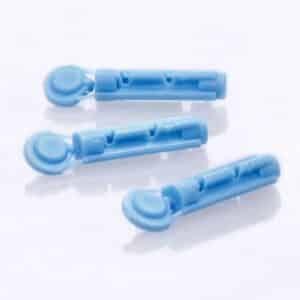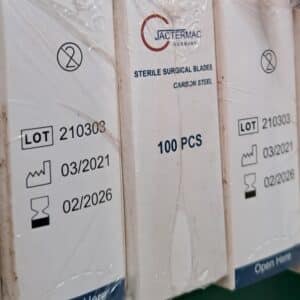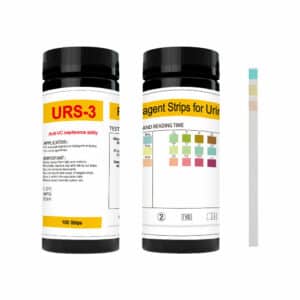ALKALINE PHOSPHATASE Chemistry Reagents
₵565.00
ALKALINE PHOSPHATASE Chemistry Reagents
Colorimetric method
KINETIC
PRINCIPLE
Alkaline phosphatase (ALP) catalyze the hydrolysis of 4-nitrophenylphosphate (4-NPP) with the formation of free 4-nitrophenol and inorganic phosphate, acting the alkaline buffer as a phosphate-group acceptor.
The reaction is monitored kinetically at 405 nm by the rate of formation of 4-nitrophenol, proportional to the activity of ALP present in the sample.
REAGENT COMPOSITION
3 x 1oo ml
R1 – ALP buffer: DEA buffer 1.25 mol/L pH 10.2, magnesium
chloride 0.6 mmol/L. Biocides. 3 x 80 ml
R2- ALP substrate: 4-NPP 50 mmol/L. Biocides. 1 x 60 ml
STORAGE AND STABILITY
Store at at 2-8ºC
REAGENT PREPARATION
Working reagent. Mix 4 mL of R1 + 1 mL of R2. Stable for 5 days at
20-25ºC or 15-30 days at 2-8ºC, depending on the remaining caducity
of both reagents. Protect from light.
SAMPLES
Serum or heparinized plasma, free of hemolysis. Other
anticoagulants such as EDTA, oxalate and citrate inhibit the
enzyme by complexing Mg++ and should not be used.
Alkaline phosphatase in serum or plasma is stable for 7 days at 2-8ºC.
MATERIALS REQUIRED
Photometer or spectrophotometer with a thermostatic cell
compartment set at 25/30/37ºC, capable of reading at 405 nm.
Stopwatch, strip-chart recorder or printer.
Cuvettes with 1-cm pathlength.
Pipettes to measure reagent and samples.
ALKALINE PHOSPHATASE Chemistry Reagents per box






